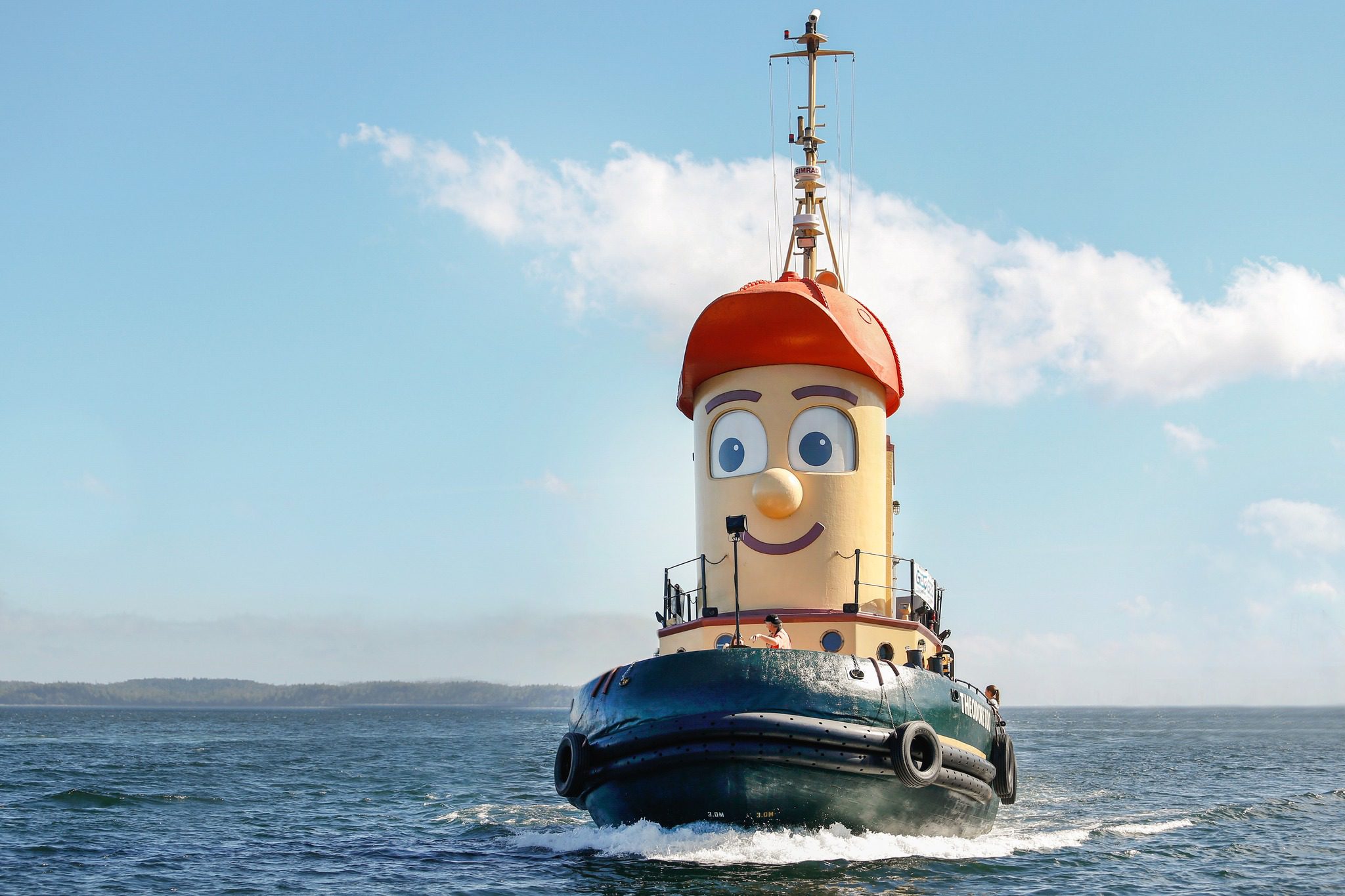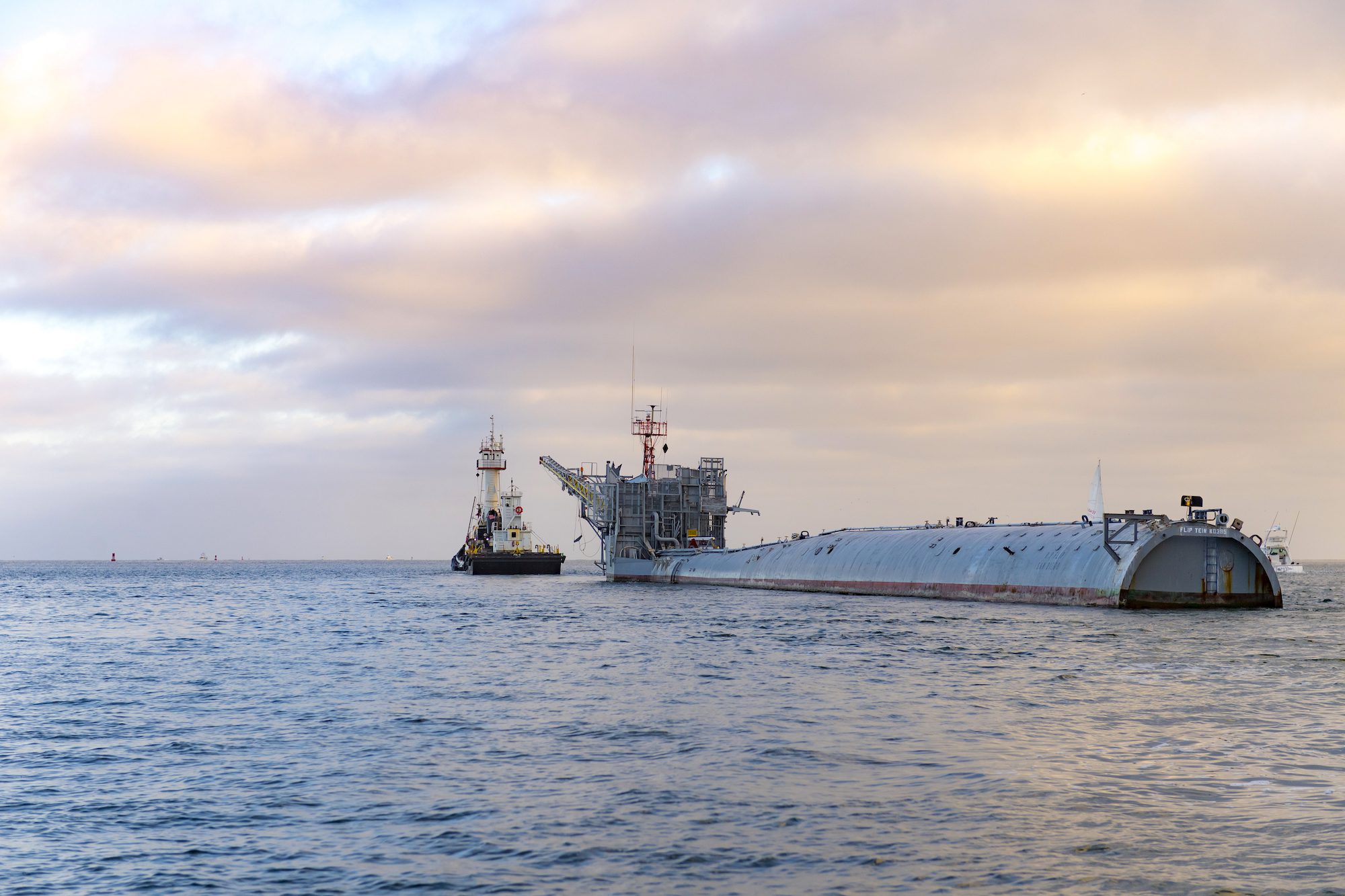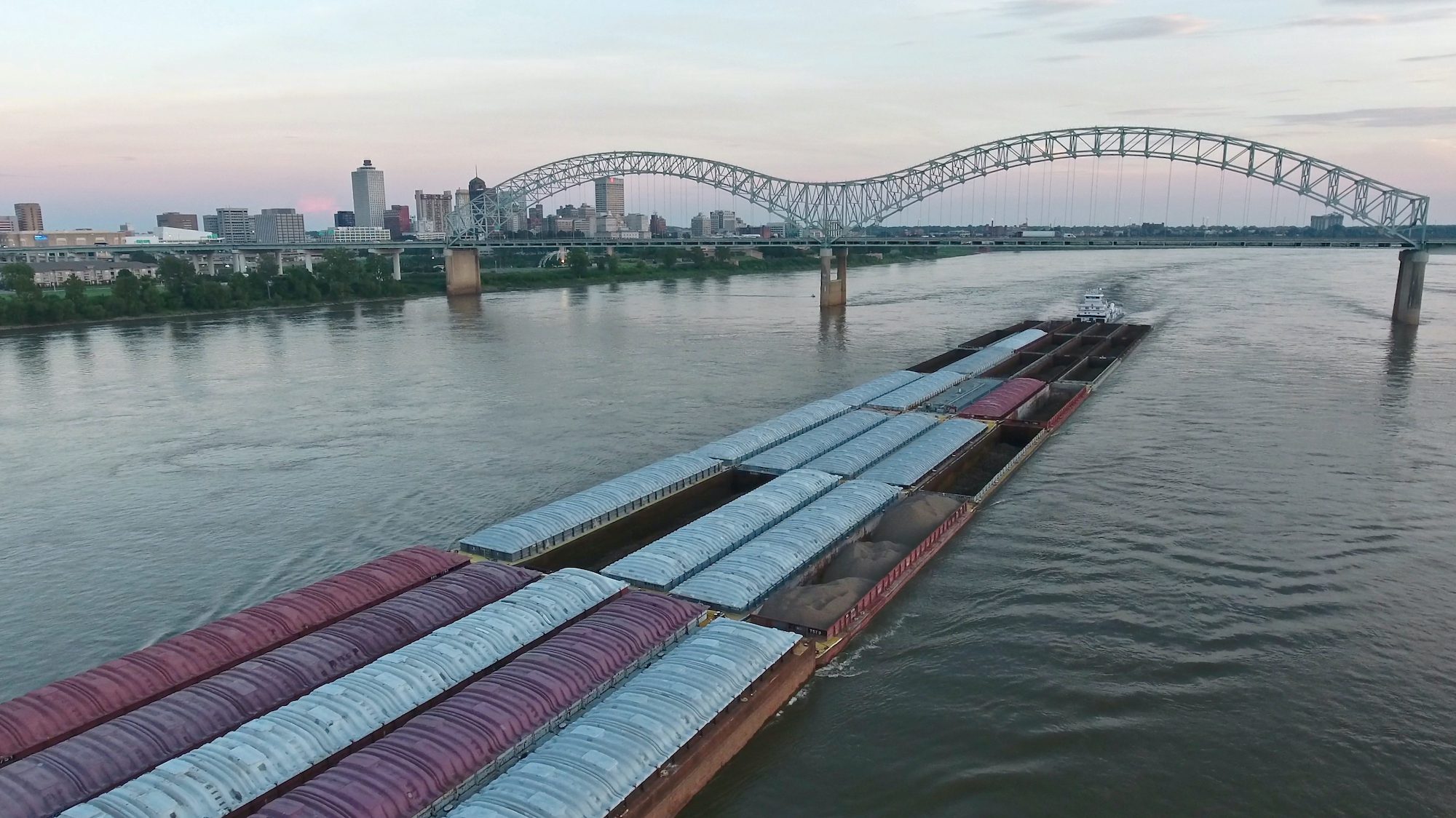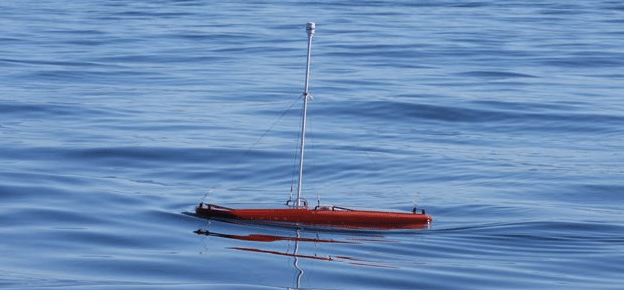
During an overcast and foggy day on November 17 four robots departed San Francisco on a voyage across the Pacific to ports in Japan and Australia. The crossing, a partnership between Liquid Robotics and technology companies like Google Earth, was designed to showcase new robotic ocean technology and foster scientific discoveries by collecting vast amounts of ocean data. All without the assistance of humans.
Seven months after the leaving Golden Gate bridge in their wake the robots, which have a top speed of just 2 knots, made it to the coast of Hawaii where maritime journalist Brian Lam checked on their progress. In the latest issue of Wired he writes:
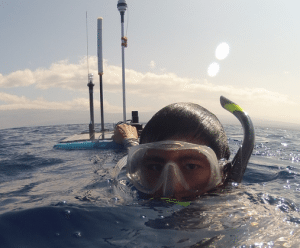 To bystanders, a Liquid Robotics Wave Glider looks like a buoy, hardly moving at all. But I found that while swimming with a glider, if I looked down to adjust my dive mask for only a few seconds, it was already hastily swimming away.
To bystanders, a Liquid Robotics Wave Glider looks like a buoy, hardly moving at all. But I found that while swimming with a glider, if I looked down to adjust my dive mask for only a few seconds, it was already hastily swimming away.
The subtle, slow-but-steady, wave-powered drive of the Wave Glider is at the heart of what makes this technology so special. Machines that are passive enough to benefit from ocean power generally drift. But pilots can steer Wave Gliders using solar-powered electronics and satellite communication equipment, while all of the locomotion (the most energy-expensive element of any robotic vehicle) comes from the ocean itself. There’s no such thing as a perpetual motion machine, but these machines can nearly rove the oceans until they break.
Eric Brager, Test and Evaluation Manager at the Liquid Robotics R&D lab, says, ”Even when it appears flat at sea, there’s enough ocean energy that the Wave Glider can still always be moving forward.”
The Wave Glider’s design is simple: A surfboard-sized float bobs on waves, big or small. That motion is transferred through a streamlined, 7-meter, rubber-and-steel cable to a submarine that cruises in the deeper, calmer waters. “In the rough open ocean, seven meters down, there’s virtually no up and down wave motion,” Brager says. Continue Reading…
Read the full article titled Robot Boats Survive Epic Voyage Across the Pacific at Wired.com.

 Join The Club
Join The Club





 To bystanders, a Liquid Robotics Wave Glider looks like a buoy, hardly moving at all. But I found that while swimming with a glider, if I looked down to adjust my dive mask for only a few seconds, it was already hastily swimming away.
To bystanders, a Liquid Robotics Wave Glider looks like a buoy, hardly moving at all. But I found that while swimming with a glider, if I looked down to adjust my dive mask for only a few seconds, it was already hastily swimming away.
